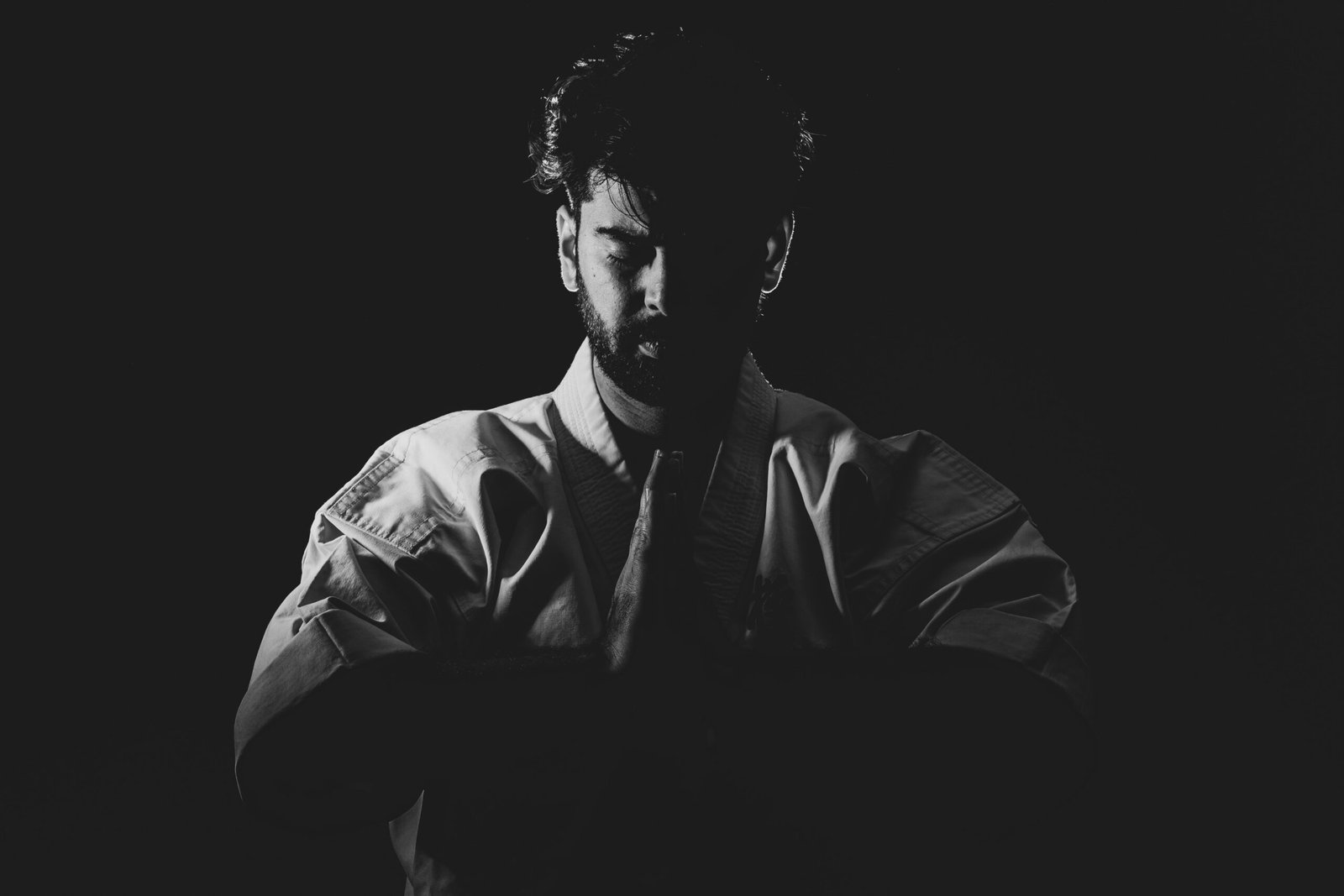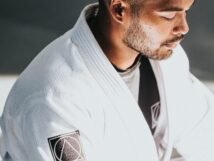If you're wondering what martial art to learn, look no further! USHRK Kumdo & Kendo offers a modern Korean style martial arts experience that will enhance both your physical and mental strength. Not only will you learn self-defense techniques, but you'll also gain a newfound confidence that will carry over into all aspects of your life. Visit us today and discover the best martial arts training near you.
Different Types of Martial Arts
Martial arts have gained popularity worldwide as a means of self-defense, physical fitness, and personal development. With various styles and techniques to choose from, it is essential to understand the different types of martial arts before embarking on your training journey. Each discipline offers unique benefits and caters to different goals and preferences. In this comprehensive article, we will explore some of the most popular martial arts and delve into their origins, techniques, training styles, and more. By the end, you will have a better understanding of the options available and be better equipped to make an informed decision about which martial art is right for you.
Considerations before Choosing
Before diving into the specifics of each martial art, it is crucial to consider certain factors that can influence your choice. Understanding these considerations will help you align your goals and preferences with a suitable martial art. Let's explore some key points to ponder:
Fitness Goals
Whether you aim to improve cardiovascular endurance, gain strength, or increase flexibility, different martial arts offer varying degrees of physical fitness benefits. Some disciplines, like Muay Thai and boxing, emphasize intense cardio workouts, while others, such as Brazilian Jiu-Jitsu and Judo, focus more on strength and conditioning. Understanding your fitness goals will help you find a martial art that aligns with your desired physical outcomes.
Self-Defense
Self-defense is often a primary motivator for individuals seeking to study martial arts. While all martial arts have elements of self-defense training, some styles place more emphasis on practical applications. Martial arts like Krav Maga and Brazilian Jiu-Jitsu excel in teaching effective self-defense techniques in real-world scenarios.
Combat or Sport
Some martial arts focus on combat and practical fighting techniques, while others are primarily practiced as sports. If your goal is to compete and test your skills in a regulated setting, martial arts like Taekwondo, Judo, and MMA may be more suitable. On the other hand, if you are more interested in the historical and philosophical aspects of martial arts, disciplines such as Kung Fu and Karate may be more appealing.
Time Commitment
Consider the time you can commit to training. Some martial arts may require more frequent and extensive training sessions, while others offer more flexible practice schedules. Assess your availability and dedication to ensure that you can fully participate in the training required by your chosen martial art.
Age and Physical Abilities
Age and physical abilities can also play a significant role in selecting a martial art. Some styles, like Capoeira and Kung Fu, place greater emphasis on agility, flexibility, and acrobatic movements, which may be more suitable for younger practitioners. Others, such as Tai Chi or Brazilian Jiu-Jitsu, can be practiced by individuals of all ages and fitness levels.
Mental and Spiritual Benefits
Many martial arts go beyond physical training and provide mental and spiritual benefits. Some styles, like Kung Fu and Karate, emphasize discipline, focus, and mental clarity. Others, such as Tai Chi and Aikido, prioritize relaxation, mindfulness, and energy flow. Consider the mental and spiritual aspects you seek in your martial arts practice to find a style that resonates with your personal goals.
Local Availability and Cost
The availability of martial arts training centers in your area and their associated costs are essential factors to consider. Ensure that the martial art you choose has accessible training facilities and fits within your budget. Research local martial arts schools, visit them if possible, and inquire about their training programs and fees.
Personal Preference and Interest
Ultimately, your personal preference and interest should guide your decision. Reflect on the martial arts you have been intrigued by or enjoyed watching. Consider the styles and techniques that appeal to you visually and emotionally. Having enthusiasm and genuine interest in the martial art you choose will greatly enhance your journey and dedication to its practice.
Training Environment
The training environment can significantly impact your overall experience. Some martial arts schools adopt a traditional approach, emphasizing discipline and strict adherence to tradition. Others may have a more relaxed and informal atmosphere. Visit different schools, observe classes, and engage with instructors and students to assess which training environment suits your preferences.
Community and Culture
The community and culture surrounding a martial art can greatly enrich your training experience. Some styles, like Taekwondo, Judo, and Karate, have established international federations and communities that offer a sense of belonging and opportunities for networking and growth. Consider the social aspect and the kind of community you want to be a part of when selecting a martial art.
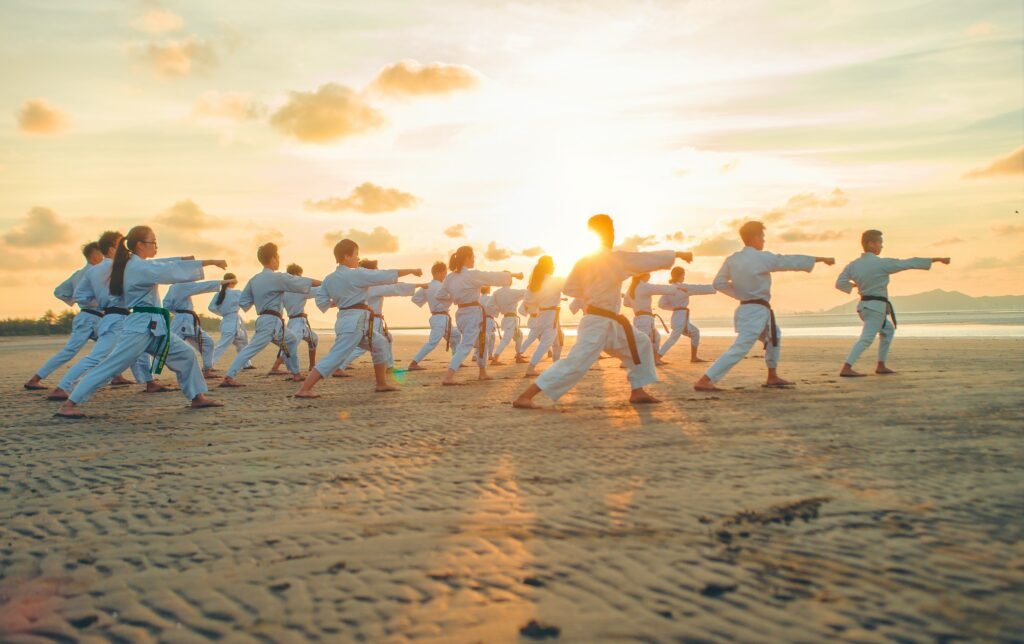
Karate
Karate, which originates from Okinawa, Japan, is one of the most widely recognized and practiced martial arts globally. It is renowned for its striking techniques and emphasis on self-discipline and personal growth.
Origin and Philosophy
Karate has its roots in the fusion of indigenous Okinawan martial arts and Chinese Kung Fu. It evolved as a form of combat during the Ryukyu Kingdom era and later spread to Japan and the rest of the world.
The philosophy of Karate revolves around the development of character, self-discipline, and mental fortitude. Practitioners strive to achieve the concept of "karate-do," where "do" refers to the way or path of self-improvement.
Techniques and Movements
Karate is known for its punches, kicks, knee strikes, and open-handed strikes. It emphasizes linear movement, powerful strikes, and precise execution of techniques. Karate practitioners also train in blocking, evasive footwork, and body shifting to avoid attacks.
Belt System and Progression
Karate utilizes a colored belt system to indicate the practitioner's progress and level of expertise. The progression typically starts with a white belt and advances through various colors, such as yellow, orange, green, blue, brown, and black, which signifies mastery.
Training Styles and Focus
Karate training can vary based on the school and instructor. Some schools focus more on the traditional aspects, including kata (pre-arranged sequences of movements) and kihon (fundamental techniques). Others incorporate more sports-oriented training, such as sparring and competition.
Competition and Events
Karate offers ample opportunities for both national and international competition. Organizations like the World Karate Federation (WKF) organize tournaments and championships, including the Olympic Games, where Karate made its debut in 2021.
Famous Karate Forms
Karate forms, known as kata, are pre-arranged sequences of movements that simulate combat scenarios. These forms help practitioners improve technique, timing, and focus. Some famous Karate kata include Heian Shodan, Tekki Shodan, and Bassai Dai.
Taekwondo
Taekwondo, a Korean martial art, is renowned for its dynamic kicks and high-flying acrobatics. It is a popular choice for individuals seeking a combination of self-defense and athletic performance.
Origin and Philosophy
Taekwondo traces its roots back to ancient Korean martial arts, influenced by Chinese and Japanese styles. It was developed as a system of self-defense and has grown to become an Olympic sport.
The philosophical foundation of Taekwondo centers around respect, discipline, and self-control. Practitioners strive to embody the five tenets of Taekwondo: courtesy, integrity, perseverance, self-control, and an indomitable spirit.
Kicks and Strikes
Taekwondo is renowned for its dynamic and powerful kicks. Practitioners train in a wide range of kicks, including front kicks, side kicks, roundhouse kicks, hook kicks, and spinning kicks. Taekwondo also incorporates hand strikes and blocking techniques.
Forms and Patterns
Similar to Karate's kata, Taekwondo practitioners perform forms or patterns called poomsae. Poomsae are choreographed sequences of movements that simulate various combat scenarios. They emphasize proper technique, balance, and precision.
Belt System and Progression
Taekwondo employs a belt system to signify a practitioner's rank and progress. The ranks typically start with a white belt and progress through different colors, such as yellow, green, blue, red, and black. Each belt represents the mastery of specific techniques and principles.
Sparring and Competitions
Taekwondo places great emphasis on sparring, allowing practitioners to apply their techniques in a controlled setting. Different styles of sparring exist, including Olympic-style sparring, where participants aim to score points by striking specific targets on their opponents' bodies.
Olympic Taekwondo
Taekwondo gained international recognition when it was included as a medal sport in the Olympic Games. It has become a widely watched and highly competitive event, showcasing the speed, agility, and power of Taekwondo practitioners.
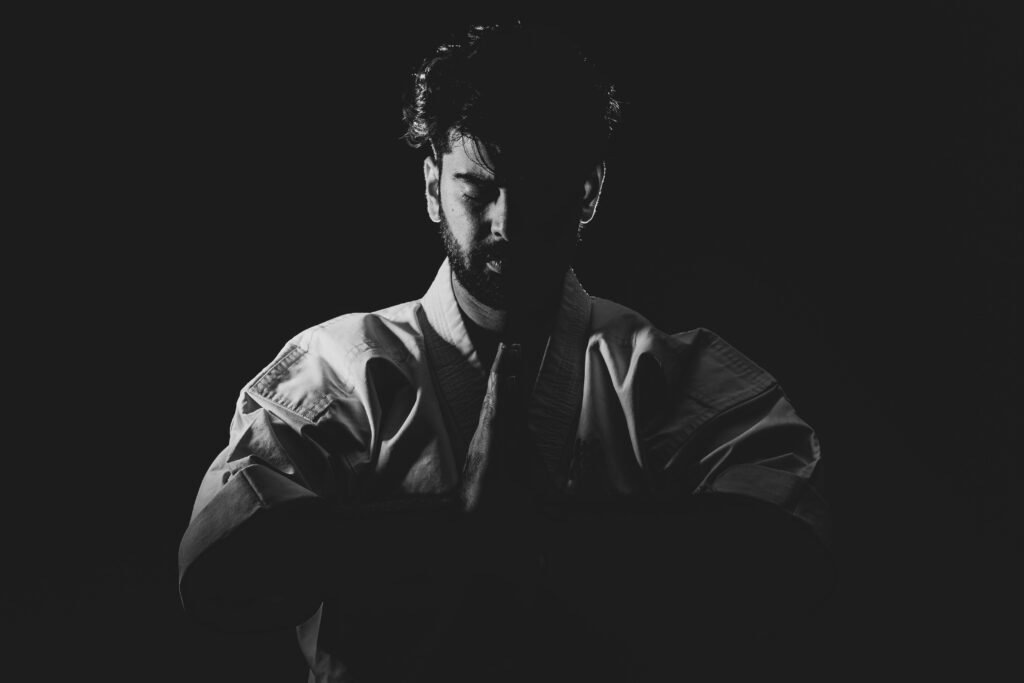
Judo
Judo, originating from Japan, is a martial art that focuses on throws and grappling techniques. It is renowned for promoting discipline, physical fitness, and mutual respect.
Origin and Philosophy
Judo was developed by Jigoro Kano in the late 19th century. Kano sought to create a martial art that emphasized technique and efficiency while minimizing reliance on brute strength. Judo translates to "the gentle way," underscoring its philosophy of using an opponent's strength to achieve victory.
Throws and Grappling Techniques
Judo primarily focuses on throws and grappling techniques, aiming to off-balance and subdue opponents. Practitioners learn various throws, including hip throws, shoulder throws, and leg sweeps. Judo also encompasses groundwork, where competitors engage in close-quarter grappling and submission techniques.
Belt System and Progression
Judo utilizes a belt system similar to many other martial arts. The ranks progress from white to black belts, with different degrees of black belt indicating advanced skill levels. Progression in Judo is based on technical proficiency, knowledge of techniques, and overall understanding of the art.
Randori (Free Practice)
One of the key training components in Judo is randori, or free practice. Randori allows practitioners to apply techniques and strategies in a dynamic and unscripted manner, simulating real-life combat scenarios. It promotes adaptability, quick thinking, and the ability to react under pressure.
Judo in Olympics
Judo has been an Olympic sport since 1964. The competitive aspect of Judo is highly regarded, with international tournaments and championships providing opportunities for athletes to showcase their skills on a global stage.
Self-Defense Applications
Judo's emphasis on throws and grappling makes it an effective self-defense martial art. By utilizing an opponent's energy against them, practitioners can neutralize threats without relying solely on strikes or physical strength.
Kung Fu
Kung Fu, originating from China, encompasses a wide range of martial arts styles. It is renowned for its diverse techniques, philosophical underpinnings, and portrayal in popular culture.
Origin and Philosophy
Kung Fu has a rich history dating back thousands of years in China. It emerged as a means of self-defense, military training, and spiritual development. Kung Fu encompasses a diverse range of styles, such as Wing Chun, Shaolin Kung Fu, and Tai Chi, each with its unique philosophy and techniques.
Styles and Techniques
Kung Fu encompasses a vast array of styles, each with its techniques and characteristics. Some focus on strikes and kicks, while others emphasize forms, internal energy cultivation, or weapons training. Styles like Wing Chun are known for their close-quarters combat techniques, while Shaolin Kung Fu showcases a wide range of dynamic movements.
Martial Arts Movies
Kung Fu gained significant international popularity through martial arts movies, particularly during the 1970s and 1980s. Legendary actors like Bruce Lee and Jackie Chan popularized Kung Fu styles and captivated audiences with their cinematic performances.
Internal vs. External Kung Fu
Kung Fu can be broadly categorized into internal and external styles. External styles focus on physical strength, speed, and agility, while internal styles prioritize energy cultivation, mental clarity, and body harmony. Internal styles, such as Tai Chi, often practice slow, flowing movements to develop internal energy or "chi."
Forms and Chi Development
Forms, also known as "taolu" or "kata," are an essential aspect of Kung Fu training. They are pre-arranged sequences of movements that integrate various techniques and principles. Forms training helps develop coordination, balance, and fluidity.
Weapons Training
Kung Fu incorporates various traditional weapons, such as staffs, swords, and nunchaku. Weapons training enhances hand-eye coordination, spatial awareness, and technique application. Many Kung Fu styles have dedicated weapon forms that showcase the practitioner's skill and artistry.
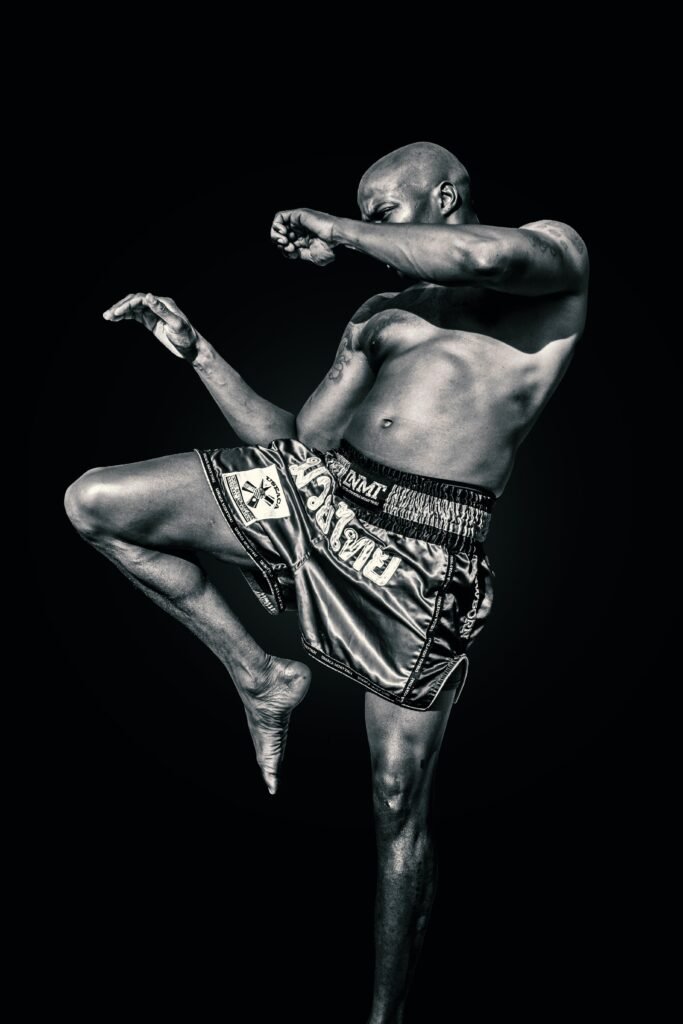
Brazilian Jiu-Jitsu
Brazilian Jiu-Jitsu (BJJ) is a grappling-based martial art that focuses on ground fighting and submission techniques. It gained popularity for its effectiveness in real-life confrontations and its success in Mixed Martial Arts (MMA) competitions.
Origin and Philosophy
Brazilian Jiu-Jitsu originated from Japanese Jiu-Jitsu and was further developed by the Gracie family in Brazil. It emphasizes leverage, technique, and strategy, enabling smaller individuals to overcome larger opponents. The philosophy of Brazilian Jiu-Jitsu emphasizes the importance of positional dominance and submission holds to incapacitate opponents effectively.
Ground Fighting and Submissions
BJJ focuses primarily on ground fighting, where practitioners aim to control their opponents and force them into submission holds. Techniques include joint locks, choke holds, and various positional control maneuvers. By exploiting leverage and knowledge of human anatomy, BJJ practitioners can neutralize opponents effectively.
Gi vs. No-Gi
BJJ training can be conducted with or without the traditional gi, a uniform consisting of a jacket and pants. Gi training enhances grip control and introduces additional techniques, while no-gi training focuses more on quicker transitions and submission setups. Some practitioners prefer the gi for its technical application, while others enjoy the faster-paced nature of no-gi training.
Defense against Bigger Opponents
Brazilian Jiu-Jitsu's techniques and principles are specifically designed to allow smaller individuals to defend themselves against larger and stronger opponents. Through effective leverage, weight distribution, and technique, BJJ practitioners learn to neutralize an attacker's advantages, level the playing field, and ultimately gain control.
Brazilian Jiu-Jitsu in MMA
Brazilian Jiu-Jitsu gained significant recognition and influence through its success in MMA competitions. BJJ practitioners showcased their ability to control opponents on the ground and secure submissions. This success paved the way for the integration of BJJ techniques into the training regimes of MMA fighters worldwide.
Mental and Physical Benefits
Beyond practical self-defense techniques, Brazilian Jiu-Jitsu offers various mental and physical benefits. BJJ training improves physical fitness, strength, endurance, and flexibility. It also enhances mental focus, problem-solving skills, discipline, and perseverance, as practitioners must navigate complex grappling situations.
Muay Thai
Muay Thai, often referred to as the "Art of Eight Limbs," is a combat sport and martial art originating from Thailand. It is known for its powerful strikes, knee strikes, and clinching techniques.
Origin and Philosophy
Muay Thai has a deep historical and cultural significance in Thailand, where it originated as a form of combat during times of warfare. The philosophy of Muay Thai revolves around discipline, respect, and mental fortitude. Practitioners are encouraged to show character, humility, and integrity both inside and outside the training environment.
Strikes and Clinching
Muay Thai emphasizes the use of fists, elbows, knees, and shins as striking weapons. Practitioners learn various techniques, such as punches, kicks, elbow strikes, and devastating knee strikes. Clinching, a unique aspect of Muay Thai, involves close-quarter grappling to control opponents and deliver devastating strikes.
Knees, Elbows, and Shins
Muay Thai places particular emphasis on knee strikes, elbow strikes, and strikes with the shin bones. These techniques are known for their power and effectiveness in inflicting damage. Training focuses on conditioning these striking surfaces to withstand impact and deliver forceful strikes.
Training for Muay Thai
Muay Thai training encompasses a combination of cardiovascular conditioning, strength training, and technical drills. Training sessions often incorporate pad work, bag work, sparring, and conditioning exercises. The rigorous training nurtures physical fitness, explosiveness, and mental resilience.
Amateur and Professional Competitions
Muay Thai offers opportunities for both amateur and professional competitors. Amateur competitions allow practitioners to gain experience and showcase their skills locally and regionally. Professional Muay Thai fighters participate in high-profile events and championships, such as the Rajadamnern Stadium and Lumpinee Stadium fights in Thailand.
Muay Thai in MMA
The effectiveness of Muay Thai's striking techniques and clinching has made it an integral part of many MMA fighters' arsenal. The art's powerful strikes and clinch control complement other martial arts disciplines, providing a well-rounded skill set for mixed martial artists.
Boxing
Boxing is a combat sport and martial art that focuses primarily on punching techniques. Known as the "sweet science," it combines speed, footwork, and defensive maneuvers to outscore or knock out opponents.
Origin and History
Boxing dates back to ancient times, with depictions of boxing found in art from civilizations such as ancient Egypt and Mesopotamia. Modern boxing as a sport evolved in the late 19th and early 20th centuries.
Punching Techniques
Boxing primarily focuses on the use of punches as offensive and defensive tools. The common punches in boxing include the jab, cross, hook, and uppercut. Boxers train extensively to develop speed, accuracy, and power in their punches.
Footwork and Defense
Footwork and defensive maneuvers play a critical role in boxing. Proper footwork allows for effective positioning, evasion, and balance, while defensive techniques like slipping, ducking, and blocking help boxers avoid incoming strikes. Mastery of footwork and defensive skills allows boxers to create openings for counterattacks.
Training and Conditioning
Boxing training typically includes a combination of physical conditioning, technical drills, and sparring. Training sessions focus on building cardiovascular endurance, speed, agility, and explosive power. Boxers also spend dedicated time on bag work, pad work, and shadowboxing to refine technique and timing.
Amateur and Professional Boxing
Boxing offers opportunities for aspiring boxers to compete at both amateur and professional levels. Amateur boxing involves local and international tournaments, including the Olympic Games. Professional boxing is governed by various organizations and features high-profile bouts, such as world championship fights.
Famous Boxing Icons
Throughout history, boxing has produced numerous iconic figures who have left a significant impact on the sport. Legends like Muhammad Ali, Mike Tyson, and Floyd Mayweather Jr. have captivated audiences with their skills, charisma, and achievements. Their contributions to boxing have elevated the sport's popularity globally.
MMA (Mixed Martial Arts)
Mixed Martial Arts (MMA) is a full-contact combat sport that combines various martial arts disciplines. It encompasses techniques and strategies from striking, grappling, and submission-based disciplines.
Origin and Evolution
MMA originated as a way to determine the most effective martial arts style in unarmed combat. The early years of MMA featured competitions that pitted practitioners of different styles against each other. Over time, MMA evolved into a regulated sport with rules, weight classes, and specific organizations.
Combining Multiple Disciplines
MMA practitioners integrate techniques from various martial arts styles such as Brazilian Jiu-Jitsu, Muay Thai, wrestling, boxing, Judo, and more. By combining elements of striking, grappling, and submissions, MMA fighters aim to create a versatile and effective approach to combat.
Training and Techniques
MMA training involves a well-rounded approach that incorporates striking, grappling, and conditioning drills. Fighters must develop skills in striking, clinching, takedowns, ground control, and submissions. MMA training also emphasizes physical strength, endurance, and mental resilience.
Different MMA Organizations
Professional MMA competitions are organized by renowned organizations such as the Ultimate Fighting Championship (UFC), Bellator MMA, and ONE Championship. These organizations host high-profile events featuring elite fighters from around the world.
Famous MMA Fighters
MMA has produced a new generation of combat sports superstars who have gained widespread fame. Fighters like Conor McGregor, Jon Jones, and Amanda Nunes have achieved worldwide recognition for their skills, personalities, and achievements in the sport.
MMA vs. Traditional Martial Arts
MMA's growing popularity has sparked comparisons between it and traditional martial arts. While traditional martial arts often focus on preserving cultural practices, spiritual development, or self-defense techniques, MMA places greater emphasis on practical combat effectiveness and competition. MMA combines the best elements of various martial arts disciplines to create a comprehensive and dynamic approach to combat.
In conclusion, the world of martial arts offers a diverse range of disciplines, each with its unique characteristics, philosophies, and training methods. Whether you seek physical fitness, self-defense skills, or personal development, there is a martial art out there to suit your goals and preferences. With an understanding of the different types of martial arts, consideration of key factors, and exploration of various styles, you can embark on a martial arts journey that is fulfilling, enriching, and transformative. So, take the time to research, visit local schools, and engage with instructors and practitioners to find the martial art that ignites your passion and matches your aspirations. Embark on this exciting adventure, and embrace the countless benefits that martial arts can bring to your life.
